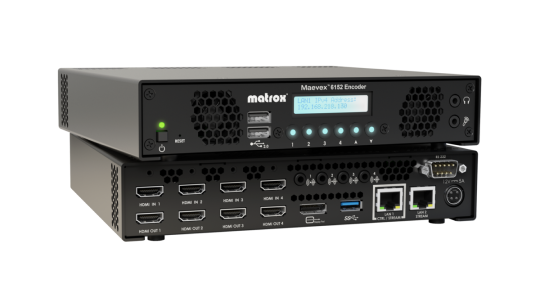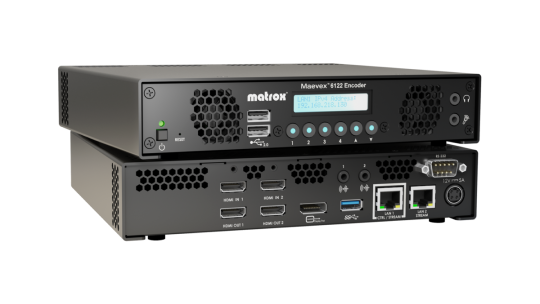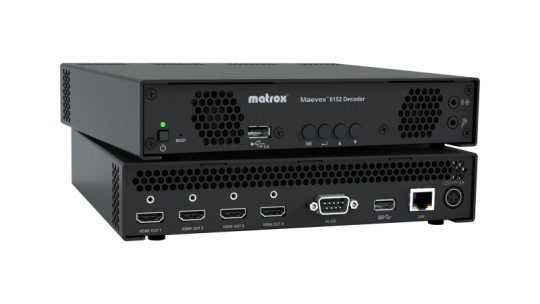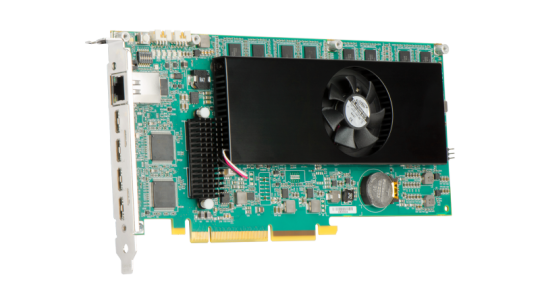Maevex 6152 Quad 4K Encoder

The Maevex 6152 delivers 4K60 input capture and encode, and quad 4K streams of high compression, flawless-quality AV over 1 GbE networks at exceptionally low latency. Streams over the LAN, WAN, and internet, feeds cloud-based servers, and records to any location.
- Built on H.264 with six streaming protocols.
- Quad zero-latency pass-through.
- Quiet, low power, rack-ready appliance.
Maevex 6122 Dual 4K Encoder

Matrox® Maevex 6122 is an HDMI® video encoder that delivers dual 4K capture, encode, stream, and record—with zero latency pass-through. The encoder supports multiple streaming protocols, including SRT and on-device HLS, for easy and secure streaming locally or across the world.
- Built on H.264 with six streaming protocols.
- Dual zero-latency pass-through.
- Quiet, low power, rack-ready appliance.
Maevex 6152 Quad 4K Decoder

Efficiently decode up to four 4K streams, or many lower resolution streams, at exceptionally low latency. Four 4K outputs with support for multiple streams per display.
- Latency as low as 50 ms.
- Multiple pre-set layout options, including PiP.
- Securely decode content sent over internet.
Maevex 6100 Quad 4K Encoder

Drives simultaneous quad 4K capture, encode, stream, and record concurrently from a single PCIe card.
- Built on H.264 with multi-protocol support.
- High density encoding with multiple cards per system.

Powerstream Plus Software
Discover, configure, and monitor all Maevex encoders and decoders anywhere on the network with Matrox PowerStream Plus software. PowerStream Plus provides full visibility and remote control of your entire infrastructure—zoom out for a macro-level overview of the Maevex topology, or drill in on a particular unit or group to fine-tune the parameters for each stream within the selection.
Maevex SDKs and APIs provide developers, system integrators, and OEMs with an easy way to build the right solution for partners and customers
What others are saying about the Maevex 6100 Series
“Ultimately, taking all factors into consideration, especially the back-end flexibility of Maevex, it was an easy choice, and even easier to integrate the solution into the Bell Centre’s AV-over-IP multicast Avaya network infrastructure.”

“The use of live content within signage is a growing trend. Validation of Matrox Maevex gives our customers an affordable way to add high-quality video, yet at low bitrates, and we are excited to see the variety of innovative projects that will result."

“After we configured PowerStream to the client’s bandwidth specifications, video distribution became a matter of plug and play. It was clear from the start that Maevex would be capable of streaming video across the existing infrastructure with minimal interruption, downtime, and expense.”
